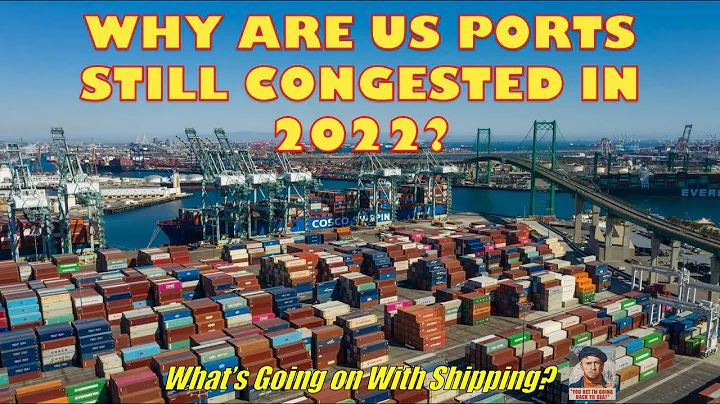This article comes from "Port Circle", written by Zhang Miaozhou of Port Circle
The port congestion problem caused by the COVID-19 epidemic has been a concern that has plagued the global shipping industry in the past two years. Even during the Lunar New Year period in 2022, container freight rates, charter rates and port congestion are still close to historical highs. Alphaliner said previous predictions of a market correction have been overturned and the industry consensus is now that supply chain tensions will continue at least throughout 2022. There are also people who are optimistic, such as Maersk said that the global supply chain difficulties will be alleviated in the second half of the year.

According to recent data from the Baltic Sea container freight index , the shipping cost per FEU from Asia to the American West after the Spring Festival is around US$15,200, and from Asia to the US East is about US$15,700. Although the off-season of shipping demand brought about by the Chinese Spring Festival has alleviated the industry's "high fever" in freight rates to a certain extent, the peak season in March will soon cause freight rates to continue to rise. On the other hand, the problem of shipping delays is also getting worse. According to the latest report released by the digital supply chain visualization platform project44, the average shipping delay from China to Europe rose to 6 days in December last year, after declining for several consecutive months. Delays on routes to the US West are also increasing. Concepcion Boo Arias, a spokesman for container shipping giant Maersk Line, previously said that delays at ports have had a knock-on effect on shipping schedules, and that staying in one port for a few days could add two weeks to the total sailing time of container ship . Flight delays have caused container transportation to be in short supply, leading to a series of butterfly effects that have led to an increase in overall freight rates in the industry, and may even intensify supply chain tensions.
The spread of Omicron is also worsening the problem of port congestion. In just three weeks, the number of people infected with Omicron at ports in the West, mainly the Port of Los Angeles and the Port of Long Beach, has risen from 100 to 1,800, exceeding the number of confirmed cases in the whole of 2021. As of February 8, the number of container ships waiting at berth at the ports of Los Angeles and Long Beach dropped to 78, the lowest number in three months. However, the number of imported containers and empty containers at the Port of Los Angeles increased compared with last week, with a total of 49,640 imported containers and a total of 59,066 empty containers in the terminal and warehouses outside the terminal. Due to a lack of labor and overflowing warehouses, the port even had to put containers on racks in the yard: according to the Pool of Pools website, the average time that racks stayed on the streets in Southern California was 8.8 days, the average before the epidemic. More than twice as long. The occupied carriages further compress the port's tolerance for congestion.
In the context of tight global supply chains, some old "cruxes" have begun to gradually ferment. The labor shortage caused by the COVID-19 epidemic has gradually developed into labor-management conflicts. In Canada, a large number of truck drivers engaged in cross-border transportation between the United States and Canada staged widespread protests and riots in the capital, Ottawa, because they were required to show proof of COVID-19 vaccination, otherwise they would lose their freight jobs. There have also been large-scale strikes caused by differences between labor and management at ports in the United States and Australia's Port Patrick. A well-known shipping analyst said that if the strike issue is not properly resolved, shipping costs in 2022 will "skyrocket." The conflicts between labor and management continue to lose consensus due to conflicts of interest, and the resulting conflicts become more and more intense. The gaps and gaps may require a lot of time and money to fill.
Port Circle (ID: gangkouquan) believes that the negative impact of the COVID-19 epidemic on the shipping industry will be very long-lasting and profound. Even if the epidemic is over and the port congestion problem is resolved, the shipping market will need sufficient time to restore its previous order. and vitality. Maritime data and consulting firm Seaintelligence said once carrier schedule reliability starts to recover, it will take up to nine months to return to normal levels, but there are currently no signs that the situation will improve. Every link in the shipping industry has been hit, directly or indirectly, with a chain reaction. Just like freight forwarding companies, the port congestion and shipping delays caused by Omicron have put the space of large shipping companies such as Maersk in a tight situation. For this reason, Maersk has also taken measures to limit the rental of space.As a result, many small and medium-sized freight forwarding companies have lost their long-term "funders" and have fallen into survival difficulties, while some large freight forwarding companies have found another way out. In order to ensure the space provided to customers in the face of shortage of transportation capacity, they have developed their own Liner operations. With the end time of the epidemic still unclear, the shipping industry must be prepared for the normalization of port congestion on a quarterly or even annual basis. For the special market environment, the industry should think deeply about special response plans. Facing the new situation, all parties in the shipping industry should reach a new consensus and construct a new and appropriate business chain under the special environment.
(circle card has been added here, please go to Toutiao client to view)





















